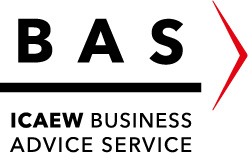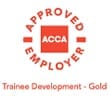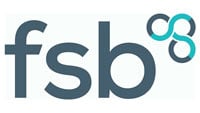
Check which employees you can put on furlough to use the CJRS
Check which employees you can put on furlough to use the Coronavirus Job Retention Scheme(CJRS)
You can claim for employees on any type of employment contract, including full-time, part-time, agency, flexible or zero-hour contracts. Foreign nationals are eligible to be furloughed. Grants under the scheme are not counted as ‘access to public funds’, and you can furlough employees on all categories of visa. You can only claim if you have previously furloughed your employee before 30 June and you submitted a claim for this by 31 July. This may differ if you have an employee returning from statutory parental leave.
There are rules about what your employees can do whilst on furlough.
The number of employees you can claim for in any claim period starting from 1 July 2020 cannot exceed the maximum number of employees you claimed for under any claim ending by 30 June 2020. This may differ where you have an employee returning from statutory parental leave or who is a returning military reservist.
Check how different employment conditions affect eligibility
If your employee is on a fixed-term contract
For an employee on a fixed-term contract, you would have been able to re-employ them and put them on furlough as long as you previously submitted a claim for them in relation to a furlough period of at least 3 consecutive weeks taking place any time between 1 March and 30 June and submitted a claim for this period by 31 July.
If the employee’s fixed-term contract has not already expired, it can be extended, or renewed.
If you employ apprentices
Apprentices can be furloughed in the same way as other employees and they can continue to train whilst on furlough.
However, you must pay your Apprentices at least the Apprenticeship Minimum Wage/National Living Wage/National Minimum Wage (AMW/NLW/NMW) as appropriate for all the time they spend training. This means that for time spent training you must cover any shortfall between the amount you can claim for their wages through this scheme and their appropriate minimum wage.
Guidance is available for changes in apprenticeship learning arrangements because of coronavirus (COVID-19) in:
- England
- Scotland
- Wales
- Northern Ireland
If your employee is a supply teacher
Supply teachers are eligible for the scheme in the same way as other employees and can continue to be claimed for during school holiday periods provided that the usual eligibility criteria are met.
If you’ve consolidated your payroll and have new employees on it
Where a group of companies have multiple PAYE schemes and there is a transfer of all employees from these schemes into a new consolidated PAYE scheme, the new scheme will be eligible to continue to furlough and claim for employees that have previously had a claim submitted for them before 31 July in relation to a furlough period of at least 3 consecutive weeks taking place any time between 1 March 2020 and 30 June.
In these circumstances, the maximum number of employees that an employer can claim for under the consolidated scheme will be the total of the maximum numbers of employees under a single claim in each scheme that is being consolidated.
Employee transfers under TUPE and on a change in ownership
A new employer is eligible to claim in respect of the employees of a previous business transferred as long as:
- the TUPE or PAYE business succession rules apply to the change in ownership
- the employees being claimed for have previously had a claim submitted for them by their prior employer by 31 July in relation to a furlough period of at least 3 consecutive weeks taking place any time between 1 March 2020 and 30 June
In these circumstances, the maximum number of employees that the new employer can claim for will be the total of both:
- the maximum number of employees the new employer claimed for in any one claim ending on or before 30 June
- the number of employees that are being transferred to the new employer which have had a claim submitted for them in relation to a furlough period of at least 3 consecutive weeks taking place any time between 1 March 2020 and 30 June. This is subject the maximum cap the previous employer was subject to.
A new employer is also eligible to claim in respect of the employees associated with a transfer of a business from the liquidator of a company in compulsory liquidation where:
- TUPE would have applied were it not for the company being in compulsory liquidation
- the employees being claimed for have been furloughed and a had a claim submitted for them by their prior employer by 31 July in relation to a period of at least 3 consecutive weeks taking place any time between 1 March 2020 and 30 June
In these circumstances, the maximum number of employees that the new employer can claim for will be the total of both:
- the maximum number of employees the new employer claimed for in any one claim ending on or before 30 June and
- the number of employees that are being transferred to the new employer which have had a claim submitted for them by their prior employer in relation to a furlough period of at least 3 consecutive weeks taking place any time between 1 March 2020 and 30 June. This is subject to the maximum cap the previous employer was subject to
Read more guidance on TUPE rules.
Read more guidance on business succession.
If your employee has more than one job or other duties
If your employee has more than one job
If your employee has more than one employer they can be furloughed for each job. Each job is separate, and the cap applies to each employer individually.
Employees can be furloughed in one job and receive a furloughed payment but continue working for another employer and receive their normal wages.
If your employee had multiple employers over the last year
If an employee has had multiple employers over the past year, has only worked for one of them at any one time, and is being furloughed by their current employer, their former employer/s should not re-employ them, put them on furlough and claim for their wages through the scheme.
If your employee does volunteer work
A furloughed employee can take part in volunteer work during hours which you record your employee as being on furlough as long as it is for another employer or organisation.
If your employee does training
Furloughed employees can engage in training during hours which you record your employee as being in furlough, as long as in undertaking the training the employee does not provide services to or generate revenue for, or on behalf of their organisation or a linked or associated organisation. Furloughed employees should be encouraged to undertake training.
Where training is undertaken by furloughed employees during hours which you record your employee as being on furlough, at the request of their employer, they are entitled to be paid at least their appropriate national minimum wage for this time. In most cases, the furlough payment of 80% of an employee’s regular wage, up to the value of £2,500, will provide sufficient monies to cover these training hours. However, where the time spent training attracts a minimum wage entitlement in excess of the furlough payment, employers will need to pay the additional wages (see National Minimum Wage Section for more details).
Furloughed employees working as the union or non-union representatives or as pension trustees
During hours which you record your employee as being on furlough, employees who are union or non-union representatives may undertake duties and activities for the purpose of individual or collective representation of employees or other workers. However in doing this, they must not provide services to or generate revenue for, or on behalf of your organisation or a linked or associated organisation.
During hours which you record your employee as being on furlough, employees who are pension scheme trustees or trustee directors of a corporate trustee may undertake trustee duties in relation to the pension scheme. However, a professional, independent pension scheme trustee who has been furloughed by the independent trustee company cannot undertake trustee work that would provide services to or generate revenue for, or on behalf of, the independent trustee company or any organisation linked or associated with that independent trustee company during hours which you record them as being on furlough.
If you’ve made your employees redundant
Where you must make redundancies, you should do so in accordance with the normal rules. This includes giving a notice period and consulting staff before a final decision is reached. You can continue to claim for a furloughed employee who is serving a statutory notice period, however, grants cannot be used to substitute redundancy payments.
If you’re made redundant, there is new legislation that ensures you are entitled to received redundancy pay based on your normal wage and not the reduced furlough rate.
If your employee’s health has been affected by a coronavirus (COVID-19) or any other conditions
If your employee is:
- unable to work because they are shielding in line with public health guidance (or need to stay at home with someone who is shielding)
- unable to work because they have caring responsibilities resulting from coronavirus (COVID-19), including employees that need to look after children
They can be furloughed as long as you previously placed the employee on furlough before 30 June and submitted a claim for them by 31 July.
If your employee is self-isolating or on sick leave
If your employee is on sick leave or self-isolating as a result of coronavirus, they may be able to get Statutory Sick Pay. The Coronavirus Job Retention Scheme is not intended for short-term absences from work due to sickness.
Short term illness/self-isolation should not be a consideration in deciding whether to furlough an employee. If, however, employers want to furlough employees for business reasons and they are currently off sick, they are eligible to do so, as with other employees. In these cases, the employee should no longer receive sick pay and would be classified as a furloughed employee. Such an employee can continue to be furloughed from 1 July so long as you have previously submitted a claim for them in relation to a furlough period of at least 3 consecutive weeks between 1 March 2020 and 30 June.
Employers can furlough employees who are shielding or off on long-term sick leave. It is up to employers to decide whether to furlough these employees. Such an employee can continue to be furloughed from 1 July so long as you have previously submitted a claim for them in relation to a furlough period of at least 3 consecutive weeks between 1 March 2020 and 30 June.
You can claim back from both the Coronavirus Job Retention Scheme and the SSP rebate scheme for the same employee but not for the same period of time. When an employee is on furlough, you can only reclaim expenditure through the Coronavirus Job Retention Scheme, and not the SSP rebate scheme. If a non-furloughed employee becomes ill due to coronavirus, needs to self-isolate or shield, then you might qualify for the SSP rebate scheme, where you can claim up to two weeks of SSP per employee.
If your employee becomes sick while furloughed
Furloughed employees retain their statutory rights, including their right to Statutory Sick Pay. This means that furloughed employees who become ill, due to Coronavirus or any other cause, must be paid at least Statutory Sick Pay. Subject to eligibility this includes those self-isolating or shielding because of Coronavirus. It is up to employers to decide whether to move these employees onto Statutory Sick Pay or to keep them on furlough, at their furloughed rate.
If a furloughed employee who becomes sick is moved onto SSP, employers can no longer claim for the furloughed salary. Employers are required to pay SSP themselves, although may qualify for a rebate for up to 2 weeks of SSP if the sickness is related to coronavirus.
If employers keep the sick furloughed employee on the furloughed rate for the period that they are sick, they remain eligible to claim for these costs through the furloughed scheme. Such an employee can continue to be furloughed as long as you have previously placed them on furlough before 30 June and submitted the claim by 31 July.
If your employee is on or has recently returned from leave
If your employee is on or has just returned from statutory parental leave
The normal rules for maternity shared parental, adoption, paternity or parental bereavement leave and may apply.
You may need to calculate your employee’s average weekly earnings differently if your employee was furloughed and then started leaving on or after 25 April 2020 for:
You can claim through the scheme for enhanced (earnings-related) contractual pay for employees who qualify for either:
- maternity pay
- adoption pay
- paternity pay
- shared parental pay
- parental bereavement pay
You can furlough an employee returning from statutory parental leave after 10 June even if you are furloughing them for the first time. You may do this provided that:
- you have previously submitted a claim for any other employee in your organisation in relation to a furlough period of at least 3 consecutive weeks taking place any time between 1 March 2020 and 30 June
- the employee you wish to furlough for the first time started maternity, shared parental, adoption, paternity and parental bereavement leave before 10 June and has returned from that leave after 10 June
- the employee was on your PAYE payroll on or before 19 March 2020. This means an RTI submission notifying payment in respect of that employee to HMRC must have been made on or before 19 March 2020
Where the employee starts a furlough period before 1 July this furlough period must be for a minimum of 3 consecutive weeks. This is the case regardless of whether the 3 consecutive week minimum period ends before or after 1 July.
When calculating the maximum number of employees you can claim for, the number of employees you are furloughing for the first time due to them returning from statutory parental leave after 10 June should be added to your previous maximum. This means you should add any employees that you are furloughing for the first time due to them returning from statutory leave onto your previous maximum.
Information is also available on what you can claim if your employee is still on maternity leave, adoption leave, paternity leave, shared parental leave or parental bereavement leave.
If your employee gets Maternity Allowance
If your employee is getting Maternity Allowance while they’re on maternity leave, they should not get furlough pay at the same time.
If your employee has agreed to be put on furlough, tell them to contact Jobcentre Plus to stop their Maternity Allowance payments.
If your employee agrees to be put on furlough and end their maternity leave early, they will need to give you at least 8 weeks’ notice and they will not be eligible for furlough pay until the end of the 8 weeks.
If your employee is a military reservist returning to work after 10 June
You can furlough an employee who is a military reservist returning to work after a period of mobilisation that ends after 10 June, even if you are furloughing them for the first time.
You may do so as long as:
- you have already claimed for another employee in your organisation for a furlough period of at least 3 consecutive weeks, between 1 March 2020 and 30 June
- the employee was away on a period of mobilisation that started before 10 June and returned from that mobilisation after 10 June
- the employee was on your PAYE payroll and you submitted an RTI submission for them on or before 19 March 2020
Where the employee starts a furlough period before 1 July this furlough period must be for a minimum of 3 consecutive weeks. This is the case regardless of whether the 3 consecutive week minimum period ends before or after 1 July.
When calculating the maximum number of employees you can claim for, the number of employees you are furloughing for the first time due to them returning from a period of mobilisation after 10 June should be added to any previous maximum. This means that you should add any employees that you are furloughing for the first time due to them returning from a period of mobilisation onto your previous maximum.
If you’re claiming for an individual that’s not an employee
You can claim a grant for individuals who are not employees as long as they’re paid via PAYE.
You can claim for:
- officeholders (including company directors)
- salaried member of Limited Liability Partnerships (LLPs)
- agency workers (including those employed by umbrella companies)
- limb (b) workers
- contingent workers in the public sector
- contractors with public sector engagements in the scope of IR35 off-payroll working rules (IR35)
After you’ve checked which employees you can claim for
Once you know whether you can put your employees on furlough and claim through the scheme, you should agree on this with them before you start your claim.
For more information, Book a Free Consultation
Need Accountancy Support?
For information on bespoke training, or if you have any other questions for Makesworth Accountant, please fill in your details below




















 148
148